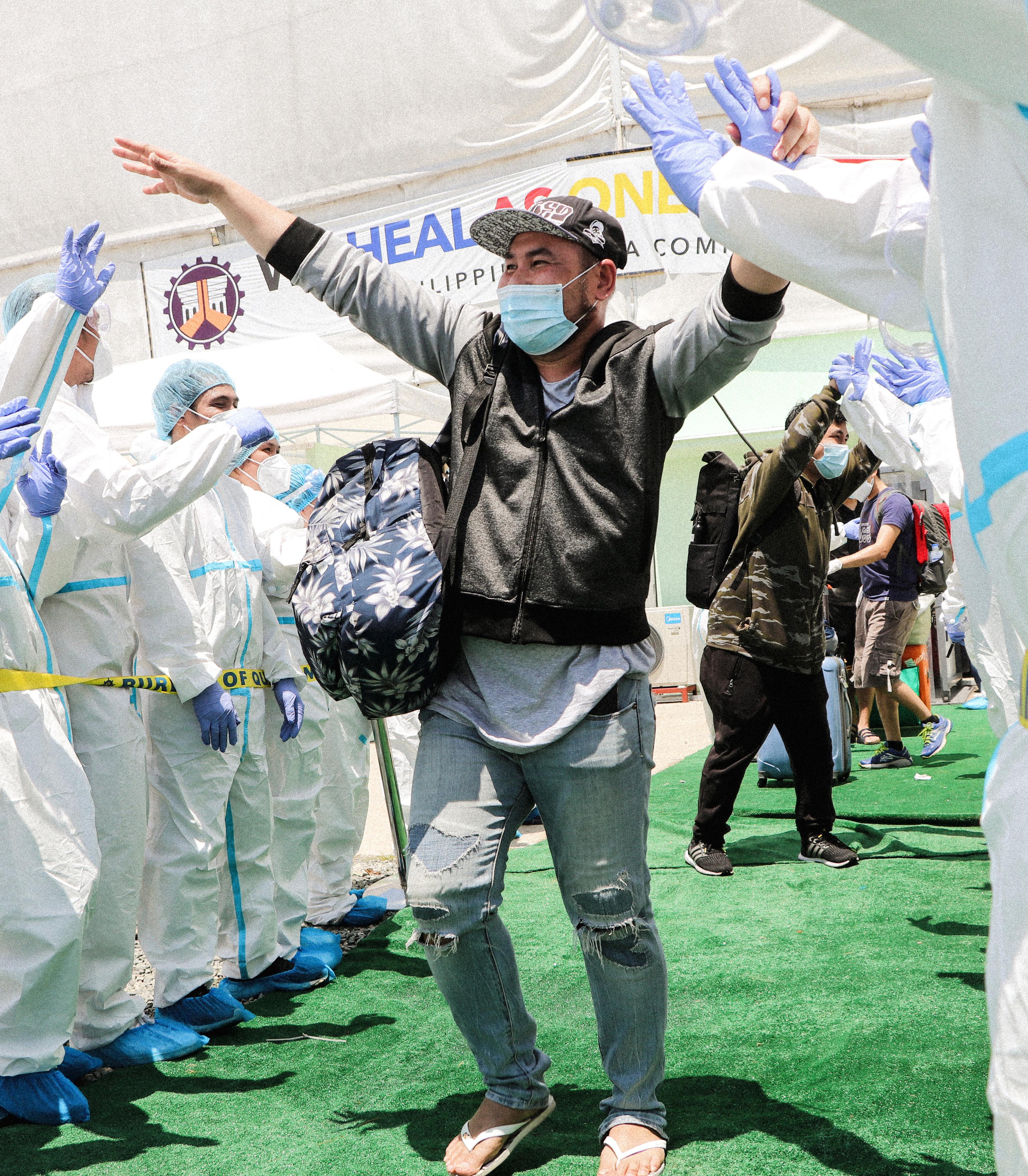
14 minute read
WE HEAL AS ONE
New Clark City was still fresh from its successful hosting of the 2019 South East Asian (SEA) Games when the COVID-19 pandemic was declared in February 2020 and the Philippines, along with the rest of the world, faced unprecedented challenges mainly in the areas of public health and economics.
The national government needed quarantine facilities for the returning overseas Filipinos and overseas Filipino workers (OFWs) from Hubei, China, which prompted the Bases Conversion and Development Authority (BCDA) to act quickly and work with various government agencies to open New Clark City’s Athletes’ Village to the first batch of returning Filipinos. The Athletes’ Village is a five-storey residential space that was used to house athletes, officials, and international volunteers during the 2019 SEA Games. It has 525 rooms, 95 of which are for persons with disabilities (PWDs).
Advertisement
Preparations
Arrey Perez, BCDA’s vice president for Business Development, said that it was a difficult period for everyone because people didn’t understand what they were dealing with at the time. After representatives from the national government inspected the site, “we set it up—we were also scared, I thought it was the Apocalypse—but we had people clean and prepare the rooms and the whole property,” Perez added. “The Athletes’ Village was a brand new facility and there were no sporting events happening anyway, so everyone thought it was the perfect venue.”
Arrivals
From China, our OFWs and OFs landed in Clark International Airport (CRK) on February 8, and stayed in quarantine in New Clark City for 14 days. The second batch of returning Filipinos—445 crew members and passengers who came from the MV Diamond Princess cruise ship arrived on February 25, likewise staying in the Athletes’ Village for the mandatory quarantine period. BCDA provided free accommodations throughout their stay.
Cooperation
Clark was then declared a safe haven, convening a team of volunteers from BCDA, the private sector, and other government agencies that were going to work together to address the nation’s needs during a most difficult time. This coming together is also a testament to New Clark City’s resilience and ability to respond to crisis, indeed, a huge part of New Clark City’s vision. But the work did not stop there—BCDA’s commitment to help with the nation’s repatriation efforts continues. Providing the country’s very first quarantine facility was just the beginning of a long journey that is all about cooperation, unity, and healing.
Teamwork Makes the Dream Work
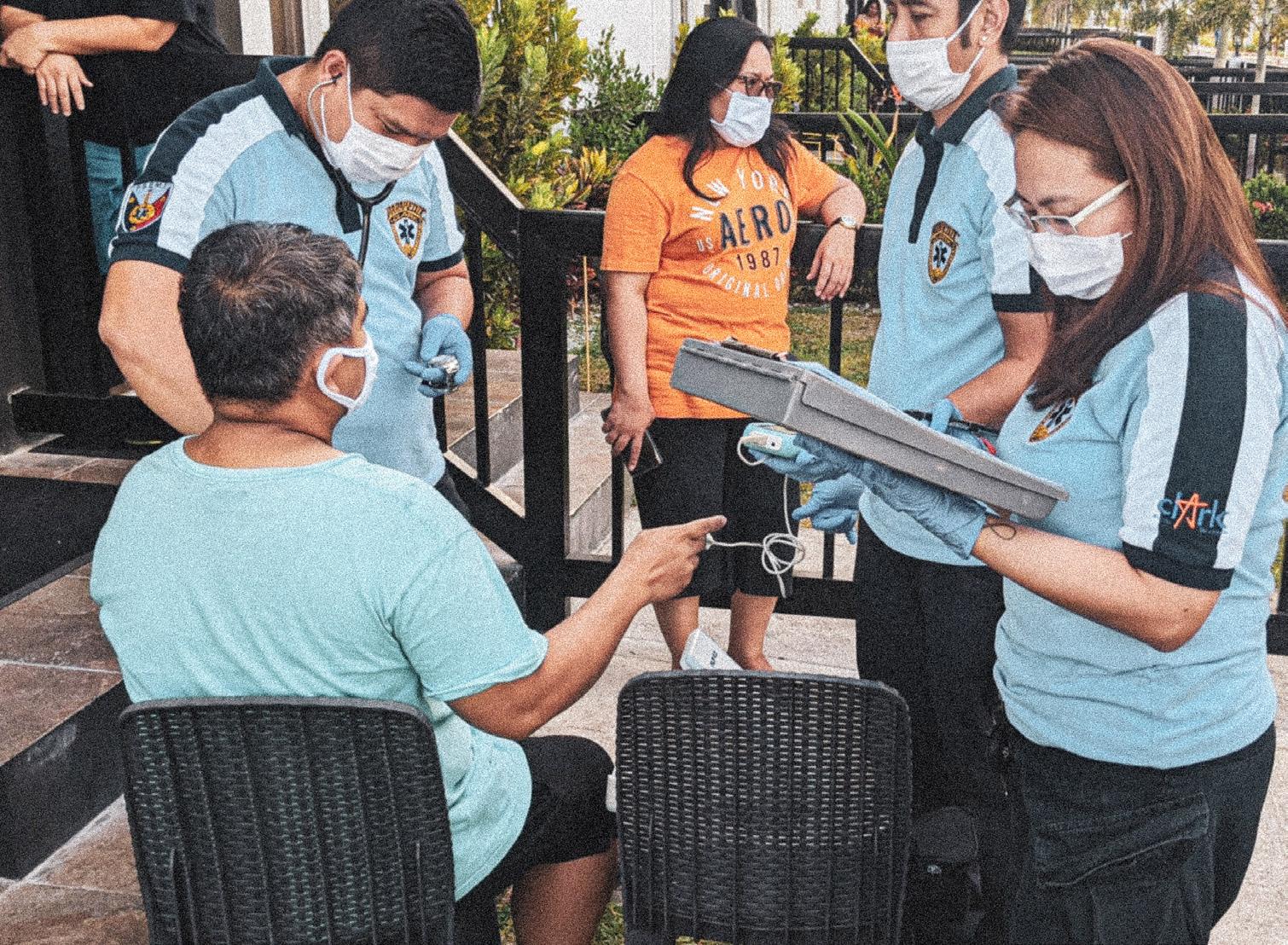
CLARK TASK FORCE SAFE HAVEN’S PARTNERS
△ Inter-Agency Task Force on Emerging
Infectious Diseases (IATF-EID) △ Department of Health (DOH) △ Bureau of Quarantine (BOQ) △ Department of Tourism (DOT) △ Department of Transportation (DOTr) △ Department of the Interior and Local
Government (DILG) △ Department of Public Works and
Highways (DPWH) △ Overseas Workers Welfare
Administration (OWWA) △ Department of Social Welfare and
Development (DSWD)
Task Force Clark Safe Haven was created to respond to the crisis brought on by the pandemic. It is composed of volunteers from the subsidiaries, Clark Development Corporation (CDC), Clark International Airport Corporation (CIAC), and Luzon International Premier Airport Development (LIPAD) Corporation, the company handling the operations and maintenance of the airport.
Clark's frontliners attend to the needs of repatriated Filipinos staying at The Mansion
Working together
The city governments of Angeles and Mabalacat, the provincial government of Tarlac and Pampanga, and the locators inside Clark, including hotels within and outside of the Clark Freeport Zone (CFZ), joined the efforts and did their share to help those who needed support. Tarlac Governor Susan Yap, Pampanga Governor Dennis Pineda, Mabalacat City Mayor Crisostomo Garbo, Angeles City Mayor Carmelo Lazatin, Jr., Porac Mayor Jaime Capil, and Capas Mayor Reynaldo Catacutan provided valuable support to the cause. It was a beautiful partnership between the public and private sectors for the benefit of the Filipinos.
Helping out
By March 2020, more than 200 Filipinos, mostly OFWs, had been stranded at the CRK, due to the strict implementation of the quarantine protocols in their respective home provinces and cities. While waiting for the local government units (LGUs) to ease quarantine restrictions, the stranded OFWs were given free accommodation—including meals and basic necessities—in various facilities inside CFZ. The Mansion hotel, for example, opened its doors to the stranded travelers until the last batch was sent home on June 7, 2020. BCDA President and Chief Executive Officer Vivencio B. Dizon led the group’s quick and proactive action to address the pressing and unprecedented needs of the public at that time. Eventually, on May 1, 2020, he was appointed as deputy chief implementer of the National Action Plan against COVID-19. He was also appointed as the chief testing czar and chief coordinator of the Test, Trace, Treat (T3) Program—on top of his role as presidential adviser on Flagship Programs and Projects.
1
Frontliners assigned at the Asean Convention Center conduct a dry run in preparation for the opening of the quarantine facility
Construction of bed partitions at the government office building in New Clark City
2
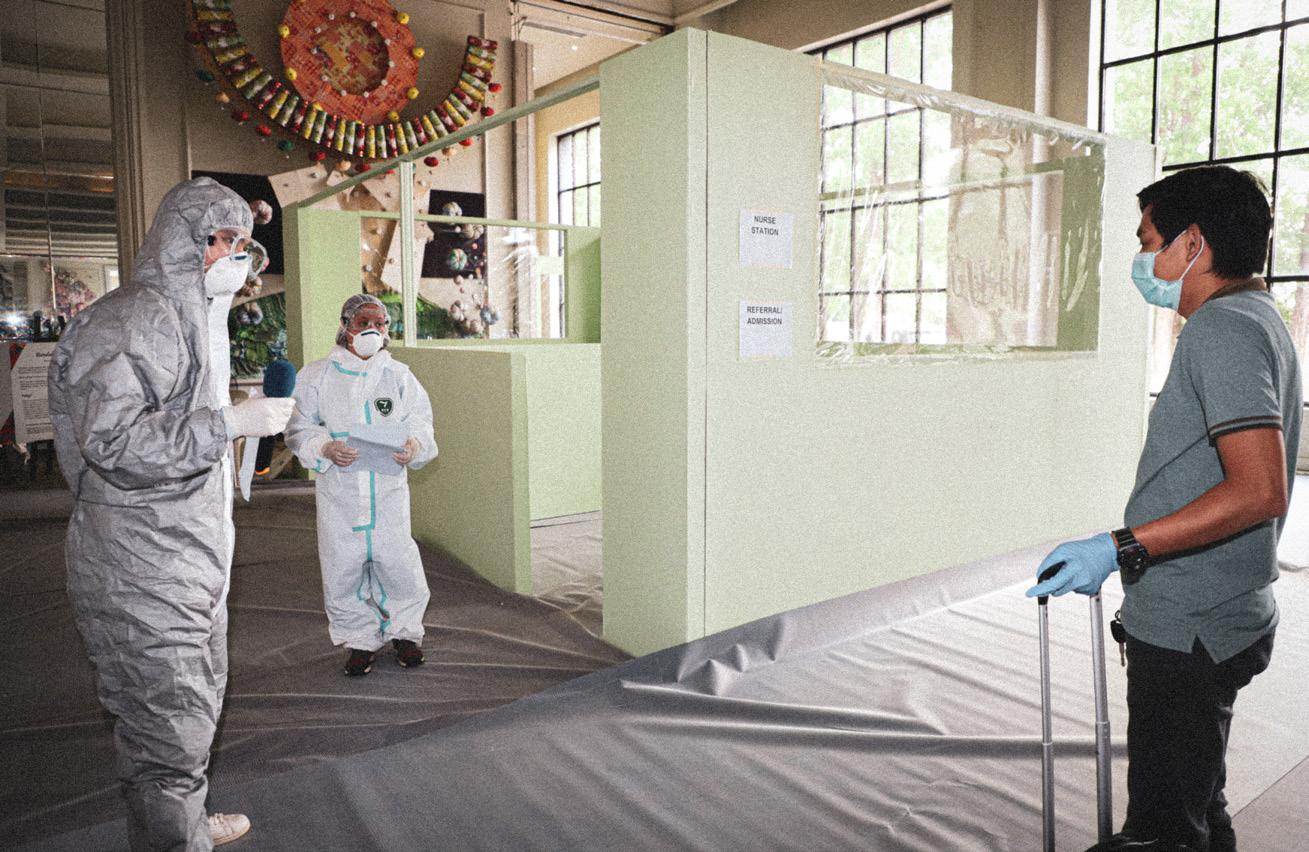
1
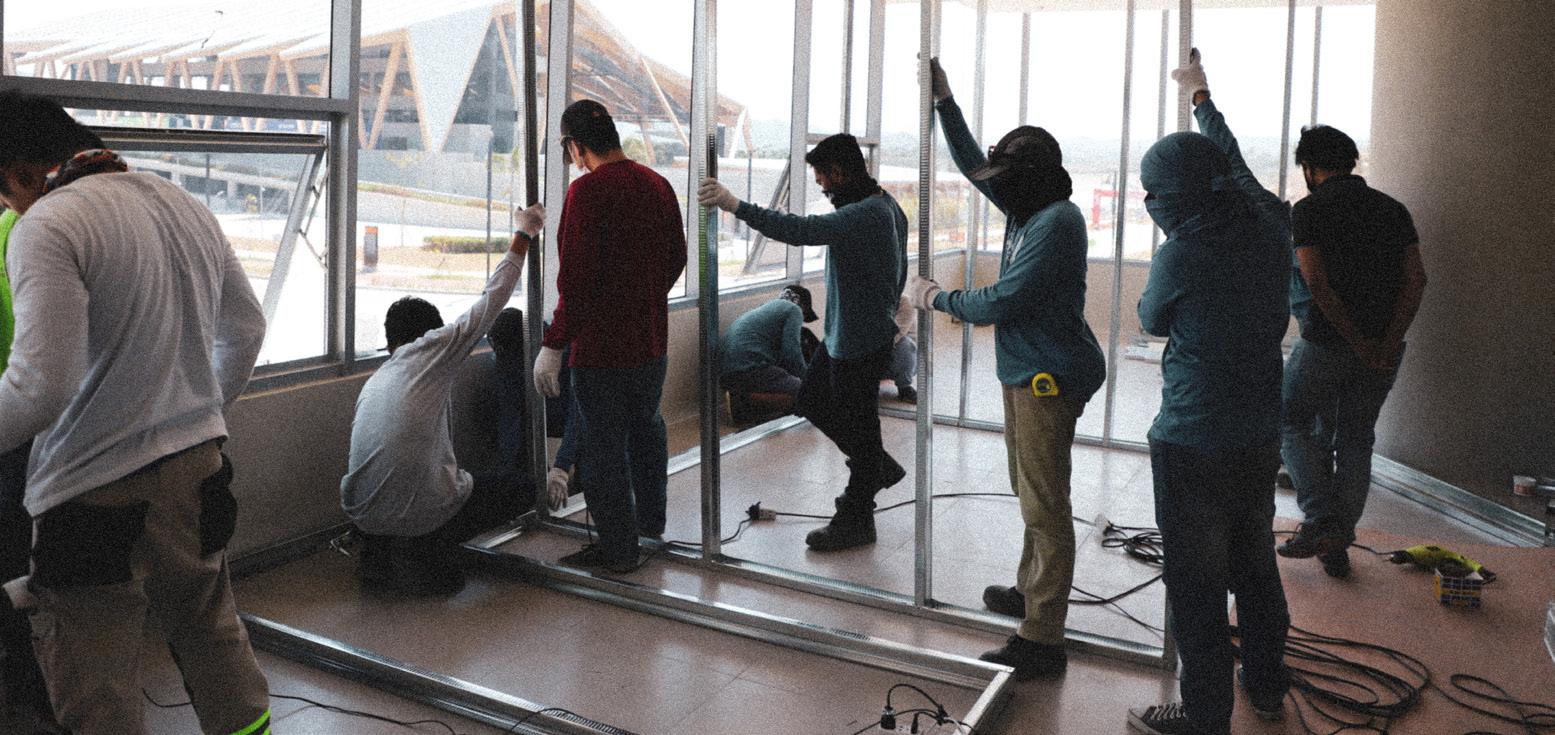
2
“W e studied China’s quarantine facilities, followed the guidance of the World Health Organization (WHO), and sought help from the DOH and some architects specializing in hospital design to come up with plans for the quarantine and treatment facilities,” Perez explained. The group then showed the plans to IATF and implemented them right away when they received the go-signal.
The task force looked at the available facilities and open spaces to see which ones could be converted into tent cities, isolation wards, and quarantine facilities. “We looked at the Asean Convention Center (ACC) and decided it would work, so with support from the DOH’s Health Emergency Management Bureau (HEMB), we came up with a design to accommodate 150 beds,” Perez said. “We also converted two government office buildings in New Clark City to provide more than 600 beds.”
Overcoming limitations
During those first weeks of the pandemic, it was not easy to build large-scale facilities and come up with efficient processes and systems such as what the task force managed to create. Perez said, “We were the only ones going around, people were staying home—there were no suppliers and no contractors because they
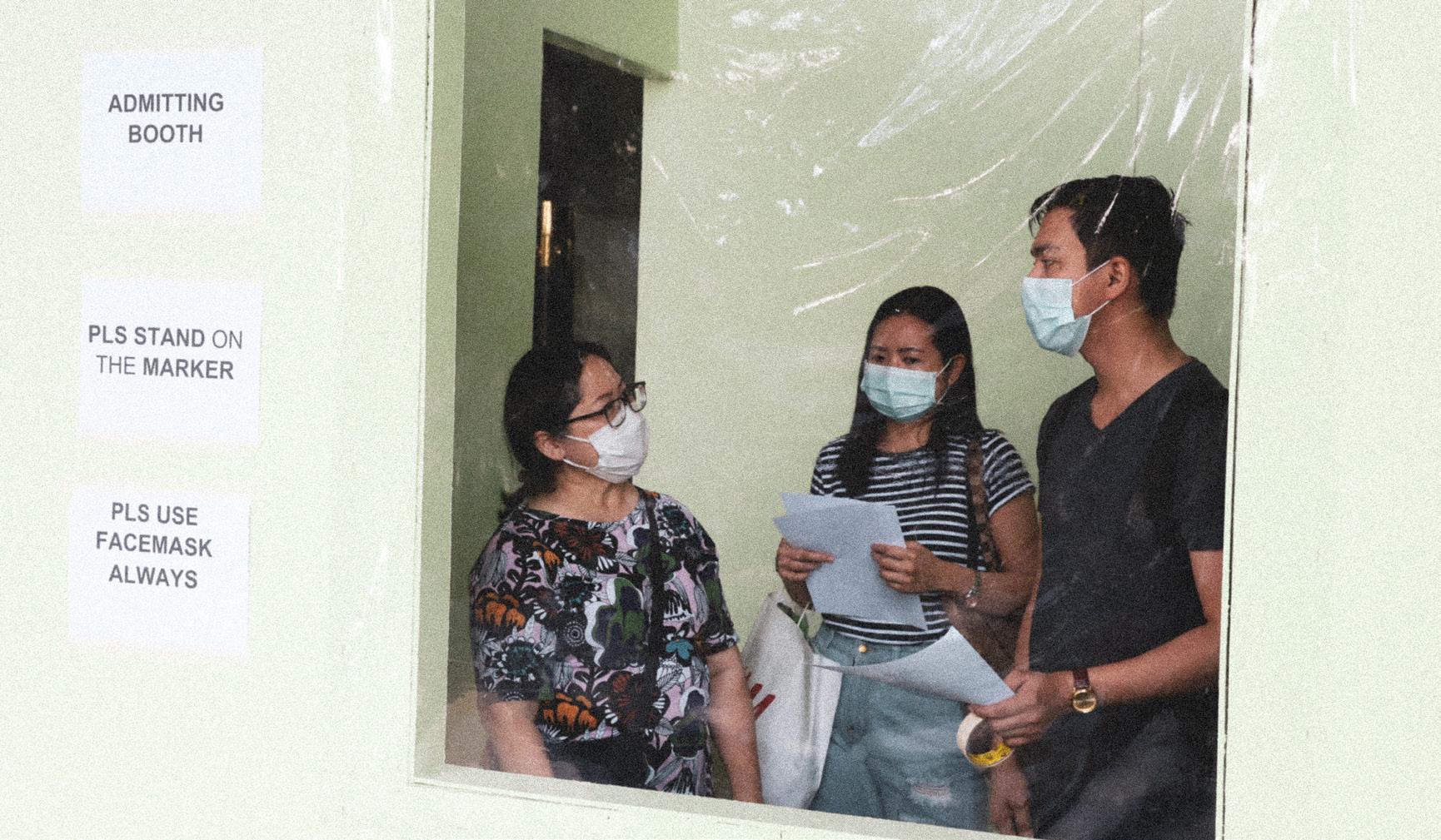
Dr. Menchie Dobles (leftmost), manager of the Health and Sanitation Department of CDC, compliments the staff members who worked in shifts to serve the patients. “The teams were amazing—they maintained a positive attitude in the face of stressful situations,” she says.
couldn’t get through the checkpoints. So we took it upon ourselves to find people who were very brave. And so in April, a month after the first Luzon-wide enhanced community quarantine (ECQ) was implemented, we already had the facilities.”
In accordance with the Bayanihan to Heal as One Act (Republic Act No. 11469), BCDA worked together with the DPWH and the IATF-EID to repurpose large-scale structures into quarantine and COVID-19 treatment facilities. The facilities were called the We Heal as One Centers, as part of the national government’s Test, Trace, Treat (T3) program. These facilities helped in isolating suspected and probable COVID-19 patients, and in decongesting hospitals in Metro Manila and other parts of Luzon.
The nation's city
Sylvester Wong, vice president for strategies and development for AECOM, the firm that conceptualized the Comprehensive Integrated Master Development Plan for New Clark City, said, “New Clark City is the first city that is ‘the nation’s city’ and as such, it can pivot to answer the needs of the whole nation. It has the new infrastructure, hence the ability to manage today’s and the future competitiveness needs of the country.” It’s been built to become the ideal space for public-private sector collaborations that will uplift the nation.
Taking care of patients and frontliners
The quarantine and COVID-19 treatment facilities were placed under the management of the CDC Health and Management Office, with BCDA and CDC volunteers serving as additional manpower. The healthcare workers assigned to these facilities were fairly compensated and provided free lodging within CFZ. Through the facilities in New Clark City and Clark, 24/7 medical care and assistance were given to more than 10,000 patients. The facilities’ administrative teams also did their best to provide all patients and healthcare workers free meals and Internet connection.
Two of the built facilities were eventually placed under the management of Pampanga (government buildings in New Clark City) under Gov. Pineda, and Tarlac (Athletes’ Village) under Gov. Yap and Mayor Catacutan.
1
Senator Richard J. Gordon, PRC chairman and CEO, inspects the PRC molecular laboratory in Clark
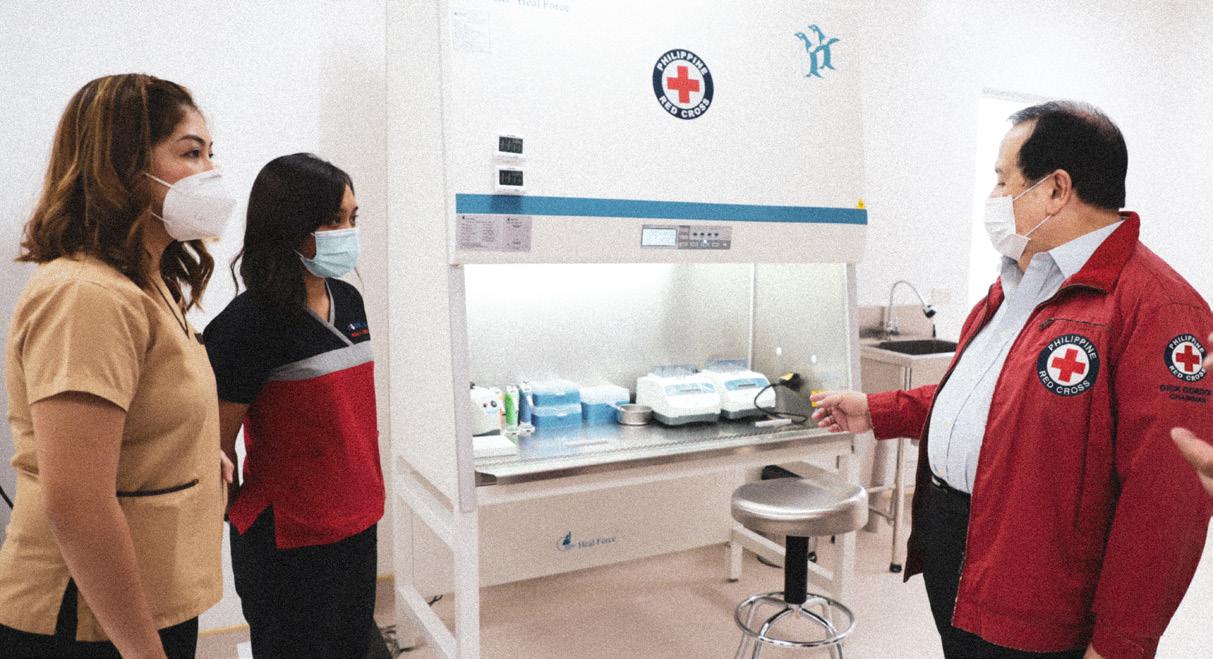
2
UP-PGH Polyclinic in New Clark City 1
Inside Clark
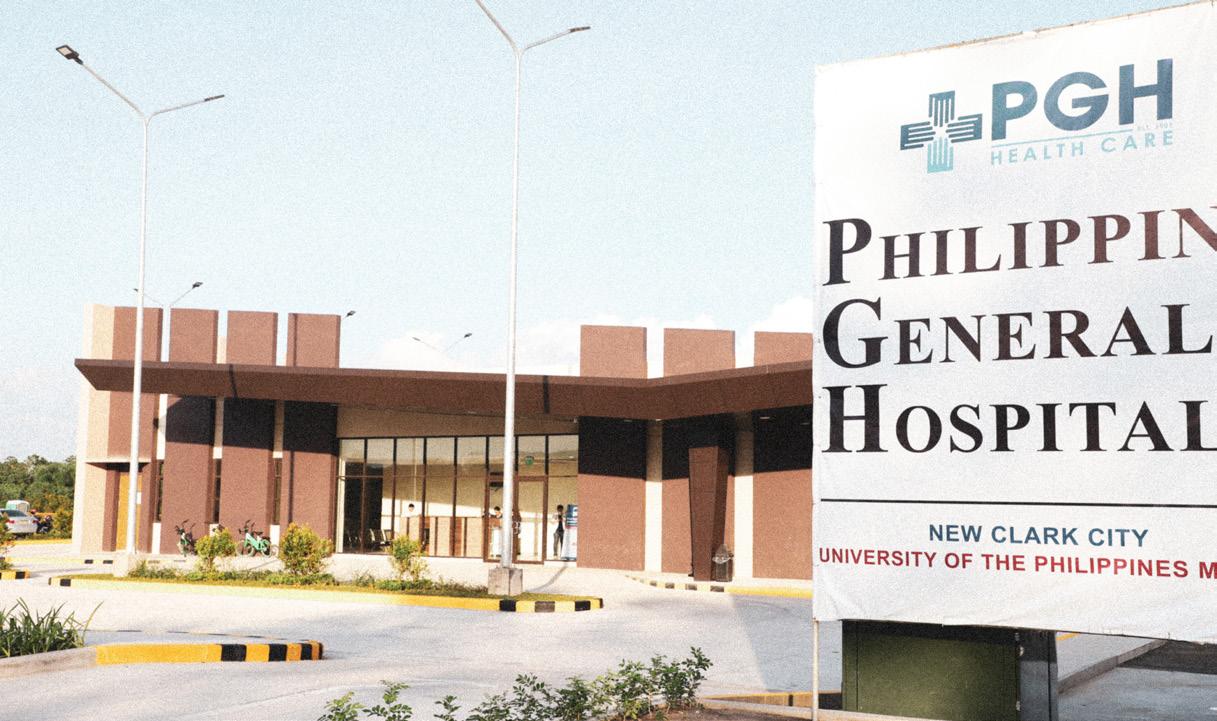
A MOLECULAR LABORATORY AND MEDICAL FACILITY
2
The Philippine Red Cross (PRC) Molecular Laboratory was built in Clark in less than two weeks. Through the joint efforts of BCDA, PRC, CDC, CIAC, and MegawideGMR Construction JV, Inc. (MGCJV), the facility became operational on May 8, 2020. It has two reverse transcription polymerase chain reaction (RT-PCR) machines, which can process up to 2,000 tests per day. This contributed largely to meeting the targeted number of tests at the time, which was 50,000 tests per day. The lab is also being used to process RT-PCR samples taken from individuals staying at the We Heal as One Centers. It has definitely increased Pampanga and the region’s capacity for testing as it helps to strengthen the government’s ongoing implementation of expanded targeted testing, particularly in Central Luzon. On June 19, 2020, Senator Richard Gordon, chairman and CEO of PRC, visited the laboratory. He was joined by PCEO Dizon, Governor Pineda, Governor Yap, Bamban Mayor Jose Antonio Feliciano, Mabalacat City Mayor Crisostomo Garbo, Metropolitan Manila Development Authority (MMDA) General Manager Undersecretary Jose Arturo Garcia, and then CDC president and CEO Noel Manankil, among others.
The Philippine General Hospital (PGH) also operates a polyclinic within New Clark City, just two minutes away from the Athletes’ Village. The clinic is equipped with a 24-hour emergency room facility, primary care and sports medicine facilities, an imaging center (for X-ray and ultrasound), a diagnostic laboratory, and a pharmacy. The polyclinic provided medical care and assistance to the quarantined individuals inside New Clark City.
1
2 2
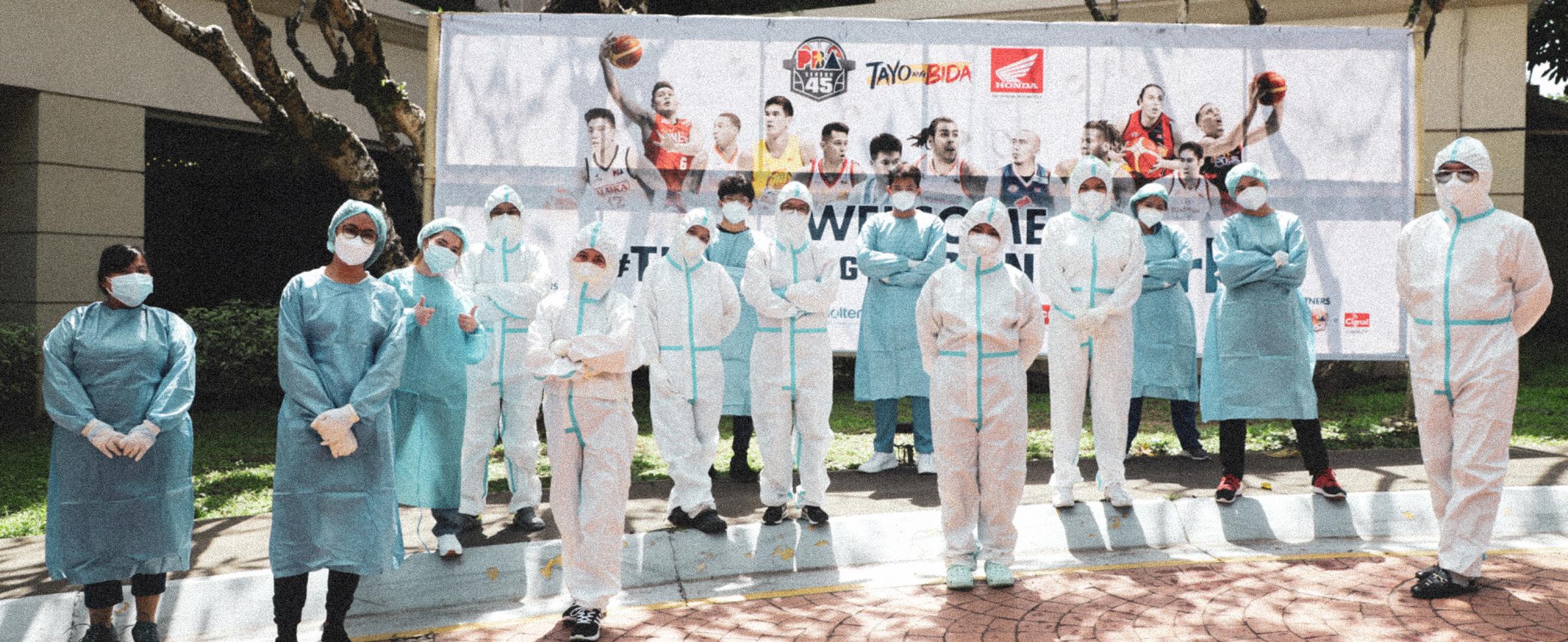
1
2

Clark's frontliners get ready to welcome the PBA bubble delegation at the Quest Plus Conference hotel
Hilton Clark Sun Valley Resort opened its doors in December 2020
Never Let a Crisis Go to Waste
While many places in Asia were at pause because of the pandemic, Clark continued to operate. There were gaps and struggles but the whole group prioritized business continuity alongside health and safety for all.
The locators were some of the biggest contributors to the sustained economic activities of BCDA and its subsidiaries during a very challenging time. In April 2020, for instance, Yokoisada Philippines Corporation (YPC), a locator inside CFZ, announced their plans to expand and produce around 2 million face masks a month. The Hilton Clark Sun Valley Resort opened in December 2020. Of course, everyone knew about the work going on at Clark International Airport to finish the new terminal building.
The presence of these locators, coupled with the success of the Philippine Basketball Association (PBA) bubble, increased investor confidence and helped resuscitate the economy, especially the tourism sector, one of the year’s worst-hit industries.
BCDA’s efforts in New Clark City to face the realities brought about by the pandemic, along with the stability of its subsidiaries, reflected New Clark City’s core vision of developing a sustainable, inclusive, and resilient metropolis.
Magnolia (right) with Rolando I. Navarrete Jr., Task Force Clark Safe Haven's airport and hotel coordinator and team lead for repatriation of returning overseas Filipinos.
BCDA
SERVICE BEYOND EXPECTATIONS
MAGNOLIA YRASUEGUI
Station Manager, DXFE Davao (FEBC) (Locally stranded individual quarantined at The Mansion hotel in 2020)
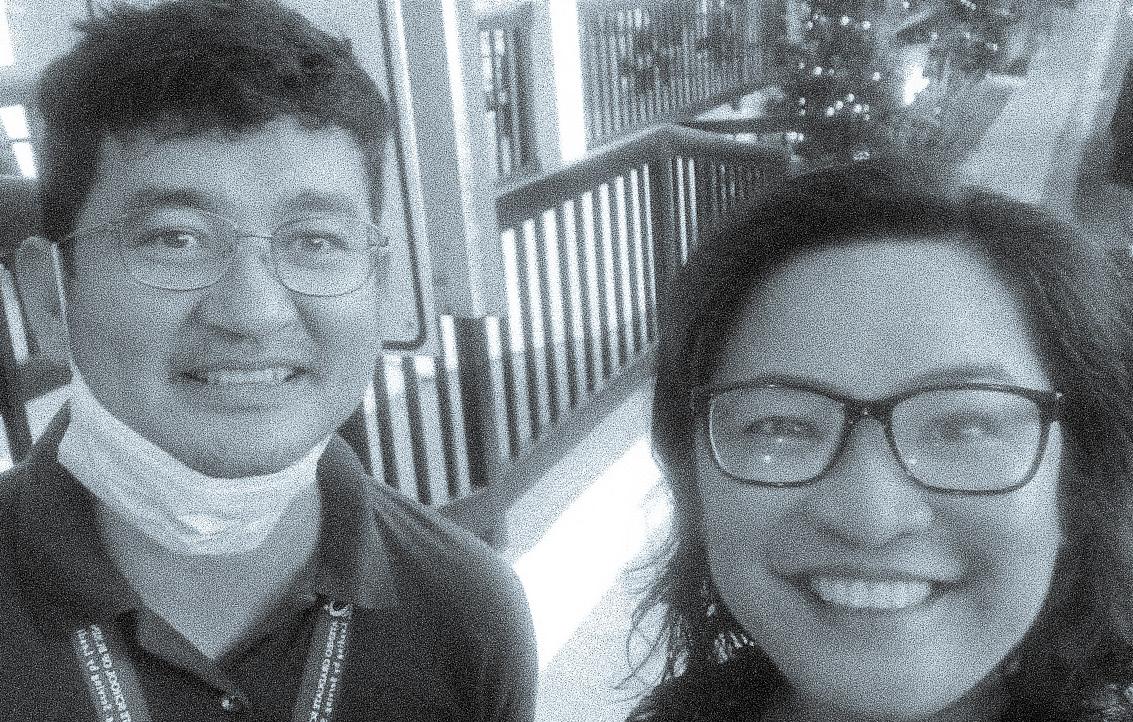
My husband and I arrived from the States on March 15, 2020. NAIA was already closed so we rebooked a flight to Clark because we figured we could fly to Davao from there. But Mayor Sara Duterte announced that Davao was not accepting any more flights from Clark so we had to stay in a hotel, thinking that the delay would only take a few days. But the situation got worse and we were stranded in Clark due to the full lockdown. Our hotel expenses were not exactly cheap so after more than a week, we were already running out of funds. I am thankful that we met someone from BCDA at that point and they adopted us and took good care of us. We were even picked up from our hotel and brought to The Mansion and we stayed there for more than two months until our flight to Davao in the first week of June 2020. I treated it as an extended vacation— the amenities were great, we had aircon, Wi-Fi, cable, free food, and free accommodation. We didn’t have to spend anything during our stay. The food was enough and it always arrived on time. Those two months were not easy but BCDA made it easy for us. Before going home, we were also constantly updated about the status of our flight. They arranged for everything and were even there at dawn to pick us up on the day we left for Davao. Going home was a seamless process—the buses were assigned, we were given food after check-in, and the flight was free, courtesy of the Davao LGU. I am thankful to Sir Vince Dizon who gave personal, hands-on support to us. He is not THE Vince Dizon, but a fellow Filipino who loved us and went out of his way to help us. He used to come over on weekends, bringing pizza for everyone— you would see him there all the time. I also noticed that, in BCDA, it was always the higher-ups who were on the frontlines, picking people up from the airport, etc. I found out that they chose to do it that way because they did not want to expose their rank-and-file workers to the risks so they can be with their families. That kind of leadership made such an impact on me and I realized that these are leaders worth emulating. In my book, they went over and beyond what was expected of them.
PBA BUBBLE
THE FIRST SPORTS BUBBLE IN ASIA
After months of strict community quarantines and travel restrictions, Clark took the first step towards “a semblance of normalcy” by opening the PBA bubble in October 2020. The bubble observed strict health and safety protocols to ensure that all participants remained COVID-free throughout PBA’s 45th season. Weeks before the PBA bubble was opened, former Pampanga vice governor and congressman Joseller “Yeng” Guiao, head coach of PBA team NLEX, had vouched for Clark as the perfect venue for the PBA’s 45th season. He cited three reasons for this: 1) the available rooms could accommodate all the 12 teams of the PBA and other staff; 2) Clark is gated, which makes it easier to implement health and safety protocols; and 3) it is close to Metro Manila. As soon as BCDA and the PBA reached an agreement, the latter secured the
The team Barangay Ginebra Gin Kings celebrates their championship at the end of Asia's first ever sports bubble held in Clark.

approval of the IATF-EID and got things started by safely bringing the PBA delegation into Clark—all 350 people from players, coaches, and staff were billeted at the Quest Plus Conference Center located within the Filinvest Mimosa+ Leisure City inside the Clark Freeport Zone. Lohas Hotel also opened its doors to 100 crew members from the television network TV5. All guests had to undergo COVID-19 tests before entering the premises and upon check-in. They were also required to use the StaySafe. ph contact tracing application and undergo swab testing every two weeks. Throughout the season, a total of 25 people per team franchise were allowed inside the bubble. Once inside, the delegates were prohibited from leaving the premises. According to the rules, anyone who went against safety protocols would face a Php100,000 fine and a one-month suspension, without pay. The games, which were played at the Angeles University Foundation gym, were held seven days a week, with two games per day. The pioneering bubble season ended on December 9, 2020, with Barangay Ginebra emerging as the champion.








